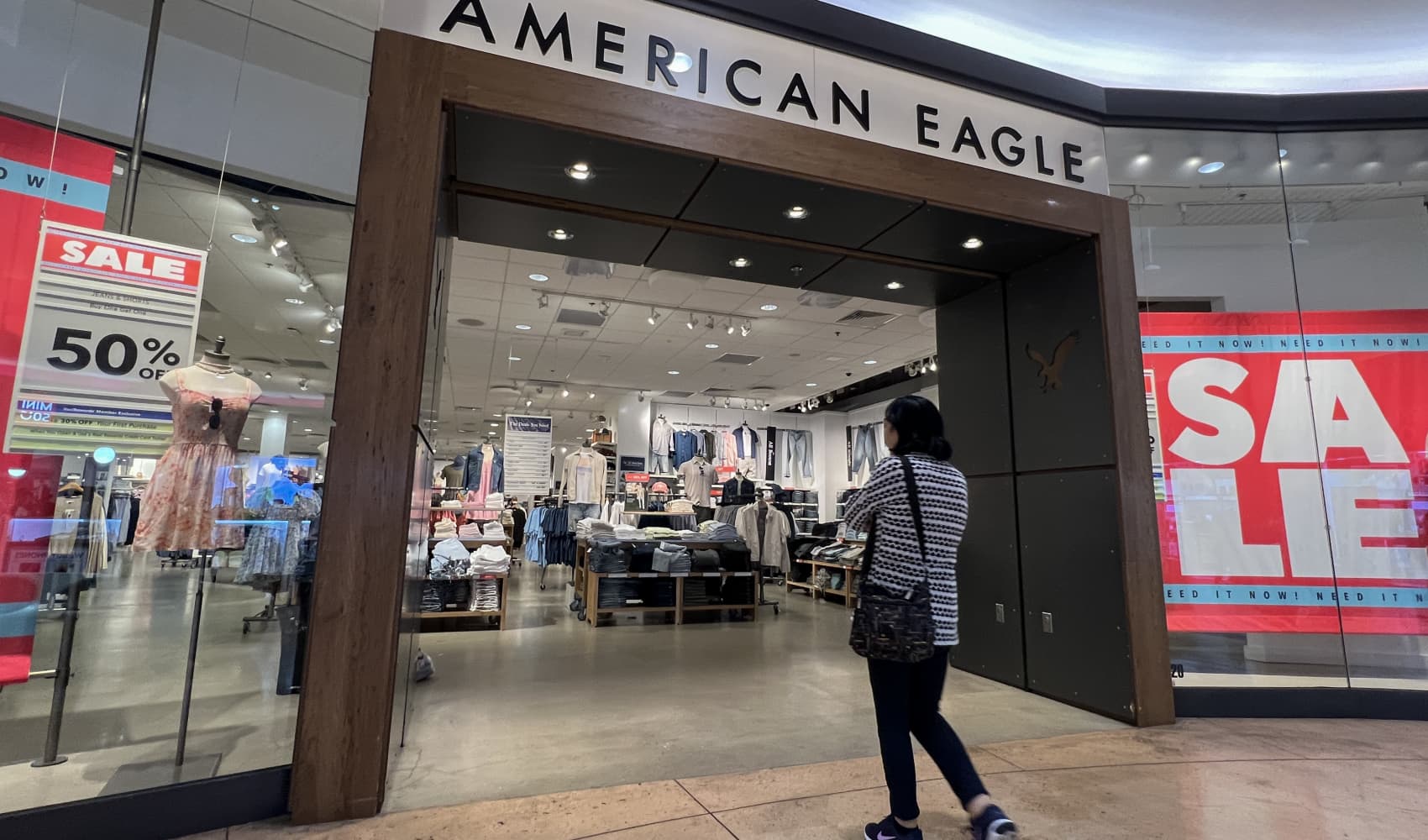Trade War Sales: How Retailers Turn Crisis Into Opportunity
Retail Revenge: How Retailers Are Turning the Trade War Into a Sales Bonanza
Introduction: From Trade Tensions to Shopping Sprees
Remember those carefree days of predictable prices and supply chains that hummed along like well-oiled machines? Well, buckle up, because the global trade landscape has taken a turn, and retailers are adapting in a way you might not expect. Instead of just absorbing the costs of tariffs, they're using them as a marketing tool. It's a retail revenge, if you will! The add-to-cart callouts are now ringing with a trade war twist: buy now to beat the tariffs.
Retailers and e-commerce brands have been flooding social media in recent weeks with appeals to shoppers’ well-founded fears that import taxes will raise prices, urging them to act now before that happens. Are they just trying to make a quick buck, or is there more to it? Let's dive in and see how retailers are masterminding this sales strategy and what it means for you, the consumer.
The "Tariff Time Bomb" Tactic
Imagine a ticking clock, but instead of a bomb, it’s the impending price hikes due to tariffs. This is the imagery many retailers are using, and it’s surprisingly effective. The urgency they create plays on our fear of missing out (FOMO) and our aversion to paying more for the same things.
Leveraging Fear of Price Increases
No one likes paying more for something they could have bought cheaper. Retailers understand this basic human psychology and are using it to their advantage. By highlighting the potential price increases caused by tariffs, they’re nudging customers to make purchases sooner rather than later. It’s like saying, “Don’t wait until it’s too late!”
DTG Pro's Approach: A Case Study
“Tariffs are rising — but our prices aren’t (for now)!” promised DTG Pro, a printing equipment seller, in a recent Instagram post with a 10% discount code. This approach is smart for several reasons:
- Transparency: They acknowledge the tariff situation.
- Urgency: They emphasize the temporary nature of their current prices.
- Incentive: They offer a discount code to sweeten the deal.
Bridal Bliss Before the Tariff Bite
Even the wedding industry isn't immune. "Unfortunately, the bridal industry is not excluded from the rising tariffs, so take advantage of our pre-tariff SAMPLE SALE until 4/15, when we will be forced to raise our prices!" New York-based Adrienne’s Bridal posted last month. This tactic preys on engaged couples who are already spending a fortune on their big day.
The Power of Limited-Time Offers
Sales tactics that rely on limited-time offers tap into a powerful psychological trigger. They create a sense of scarcity and urgency, compelling customers to act quickly. It's the same principle behind "while supplies last" or "doorbuster" deals.
Appealing to Wedding Budgets
Weddings are notoriously expensive. Any opportunity to save money is a welcome relief for couples planning their nuptials. By offering a pre-tariff sale, bridal shops are positioning themselves as allies in the fight against rising costs.
Social Media as a Sales Battlefield
Social media platforms like Instagram, Facebook, and Twitter have become the primary battlegrounds for this tariff-driven sales surge. Retailers are using visually appealing posts, targeted ads, and engaging content to reach their audiences and drive conversions.
Instagram's Visual Appeal
Instagram, with its emphasis on visuals, is a particularly effective platform for showcasing products and creating a sense of desire. Eye-catching images and videos, combined with compelling captions about tariff-related savings, can quickly capture the attention of potential customers.
Targeted Advertising on Facebook
Facebook's sophisticated targeting capabilities allow retailers to reach specific demographics with tailored messages about tariffs. For example, a furniture retailer could target homeowners who are likely to be interested in purchasing new furniture before prices go up.
Beyond the Hype: Is it a Legitimate Concern?
While some might view these sales tactics as opportunistic, the reality is that tariffs do have a real impact on businesses and consumers. It's not just smoke and mirrors; these price hikes could impact the wallets of all shoppers.
The Real Impact of Tariffs
Tariffs are essentially taxes on imported goods. These taxes are often passed on to consumers in the form of higher prices. This can affect everything from clothing and electronics to furniture and food.
Small Businesses vs. Big Corporations
Small businesses are often more vulnerable to the effects of tariffs than large corporations. They may have less bargaining power with suppliers and fewer resources to absorb the increased costs. This is why you see many small businesses actively advertising pre-tariff deals.
The Ethical Considerations
Is it ethical for retailers to capitalize on fears surrounding the trade war? Some argue that it's a legitimate marketing strategy, while others see it as exploitative. The line between clever marketing and price gouging can be blurry. While they’re not technically price gouging, they are using fear to drive sales.
The Role of Transparency
Transparency is key. Retailers should be upfront about the potential impact of tariffs and clearly explain why they are offering pre-tariff sales. Deceptive marketing tactics can backfire and damage a brand's reputation.
Balancing Profit and Customer Loyalty
Retailers must strike a balance between maximizing profits and maintaining customer loyalty. While short-term sales gains may be tempting, alienating customers with overly aggressive or misleading marketing can have long-term consequences.
Consumer Strategies: How to Navigate the Trade War Sales
So, how can you, as a consumer, navigate this landscape of tariff-driven sales? The key is to be informed, discerning, and avoid impulse purchases. Do your research, compare prices, and only buy what you truly need.
Do Your Research
Don't just take retailers' claims at face value. Research the potential impact of tariffs on the products you're interested in buying. This will help you determine whether a pre-tariff sale is genuinely a good deal.
Compare Prices
Don't assume that the first pre-tariff sale you see is the best one. Compare prices from different retailers to ensure you're getting the most bang for your buck. Price comparison websites and apps can be helpful in this regard.
Avoid Impulse Purchases
The sense of urgency created by pre-tariff sales can lead to impulse purchases. Before clicking "buy now," take a moment to consider whether you truly need the item and whether you can afford it. A well-considered purchase is always better than a rash decision.
The Future of Retail: Adapting to Global Uncertainty
The trade war may not last forever, but the lessons learned by retailers during this period will likely shape the future of the industry. Adaptability, creativity, and a focus on customer needs will be essential for success in an increasingly uncertain global landscape.
Supply Chain Diversification
Retailers are increasingly exploring supply chain diversification to reduce their reliance on any single country or region. This can help them mitigate the impact of future trade disruptions.
Building Stronger Customer Relationships
Building strong, loyal customer relationships is crucial for weathering any economic storm. Retailers that prioritize customer service, transparency, and value will be better positioned to retain customers during times of uncertainty.
The Long-Term Implications
Beyond immediate sales gains, how might this strategy affect consumer behavior in the long term? Will people become more accustomed to waiting for sales driven by external factors, or will this create a sense of perpetual urgency and anxiety around prices?
Price Sensitivity and Expectations
Constant reminders about potential price increases may make consumers more price-sensitive and less willing to pay full price for anything. This could lead to a cycle of perpetual sales and discounts, which can erode profit margins for retailers.
Erosion of Brand Loyalty
If retailers are constantly competing on price, it can undermine brand loyalty. Customers may simply choose the cheapest option, regardless of brand reputation or quality. This can make it difficult for retailers to differentiate themselves in the market.
The Role of Government and Policy
Ultimately, the impact of the trade war on retailers and consumers will depend on government policies and international trade agreements. The situation is fluid and subject to change, so it's important to stay informed about the latest developments.
Monitoring Trade Negotiations
Retailers and consumers alike should closely monitor trade negotiations and policy changes that could affect prices and supply chains. This will allow them to anticipate potential disruptions and adjust their strategies accordingly.
Advocating for Fair Trade Practices
Consumers can also play a role in advocating for fair trade practices and policies that promote stability and predictability in the global economy. This can help to create a more level playing field for retailers and ensure that consumers have access to affordable goods.
Conclusion: Navigating the New Retail Reality
The trade war has undoubtedly created a new reality for retailers and consumers. By understanding the strategies being employed by retailers and staying informed about the potential impact of tariffs, you can navigate this landscape with confidence and make smart purchasing decisions. Remember to do your research, compare prices, and avoid impulse buys. While the “tariff time bomb” may be ticking, a well-informed consumer is always the one who comes out on top!
Frequently Asked Questions (FAQs)
- What exactly are tariffs, and how do they affect prices?
Tariffs are taxes imposed on imported goods. These taxes increase the cost of importing, which is often passed on to consumers in the form of higher prices for products.
- Are pre-tariff sales always a good deal?
Not necessarily. While they can offer genuine savings, it's essential to compare prices with other retailers and consider whether you truly need the item before making a purchase.
- How can I stay informed about potential price increases due to tariffs?
Follow news outlets that cover trade and economic policy, monitor retailers' websites and social media channels, and use price comparison websites to track price changes.
- What can I do if I feel like a retailer is unfairly price gouging or taking advantage of the trade war situation?
Report your concerns to consumer protection agencies and consider supporting businesses that are transparent and ethical in their pricing practices.
- Besides buying things before tariffs take effect, are there other ways to save money during this trade war situation?
Absolutely! Consider buying used or refurbished items, repairing existing products instead of replacing them, and being mindful of your overall spending habits.





